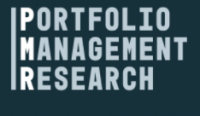Featured Investment Papers: February 2022
Featured Investment Papers: February 2022
Savvy Investor presents a selection of featured content from top asset managers for February 2022.
There is rarely, if ever, a quiet time in investment markets. Investors will be keenly aware of the latest trends including inflation, monetary policy normalisation and geopolitics. But what of ESG and sustainable investing? These are topics that will remain top of mind and be key allocation determinants for years to come. Our featured papers this month build on this; SI (Sustainable Investment) fund labelling, carbon markets, and greenwashing are among the subjects for discussion. On climate change don’t miss Impax Asset Management studying the financial impacts, and MetLife IM explaining why the market struggles to provide effective solutions.

Sustainable Investment Fund Labelling Frameworks: A comparison (Qontigo, 2022)
Qontigo examines the basis used for producing sustainable investing structures with a focus on the 12 leading European frameworks. As the library of such guidance is lengthy and increasing, this paper offers a useful addition to understanding and debate of the subject.
Five Big Themes That Will Drive 2022 (T. Rowe Price)
For compliance reasons, this paper is only accessible in certain geographies
T. Rowe Price puts forward a selection of investment themes to aid portfolio allocation as investors head through 2022. They pick five key areas to focus upon, including sustainability, where they consider the transition to clean energy and offer three investment ideas.
Carbon Markets: The why, what & where (DWS Group, Feb 2022)
DWS Group takes a deep dive into carbon markets, reviewing the current state of carbon prices and where they may go. As part of their analysis, they consider carbon emissions from first principles, before tackling trading systems and carbon border taxes.
The Agency of Greenwashing (EDHEC-Risk Institute, Feb 2022)
As the expectation for firms to declare ESG aware and sustainable business strategies has ramped up, so have the concerns over potential greenwashing. EDHEC-Risk Institute offers a way of measuring greenwashing by U.S. companies, focusing on its causes and effects.
The Financial Impacts of Climate Change (Impax Asset Management, Feb 2022)
While the devastating physical impacts of climate change are well covered elsewhere, what about their economic and financial implications? This paper discusses climate change, how to incorporate it while investing for equity and fixed income, and the extent to which the climate risks are currently priced in.
Market Frictions & Climate Change: Why the marketplace can't fix it (MetLife IM)
Investors are used to the marketplace providing solutions for so many imbalances, quickly matching up supply and demand where needed. Regarding climate change, MetLife IM points out four market frictions that hamper the market and offers suggestions for potential solutions.
A Lifecycle Comparison of Electric and Combustion-Engine Cars (Federated Hermes)
For compliance reasons, this paper is NOT accessible in the United States
With road transport as a leading contributor to global warming, it is hoped that the adoption of electric cars will bring sizeable decarbonisation benefits. In this study, Federated Hermes offers a thought-provoking comparison to combustion-engine vehicles.
The Future of Water (RBC GAM, Feb 2022)
For compliance reasons, this paper is only accessible in certain geographies
A topic gaining increasing attention is water, with RBC GAM highlighting its scarcity, pollution, varying tariffs and geopolitical tensions as issues to consider. They also look at the most affected industries and how investor engagement may drive change.
ESG in Practice: Food and beverage companies' externalities (Candriam, Jan 2022)
For compliance reasons, this paper is only accessible in the UK & Europe
The sustainability of the food sector is in focus in this paper from Candriam as they outline the current state, challenges, and resource constraints, before looking at whether we could stop eating meat and developments in low carbon foods.




